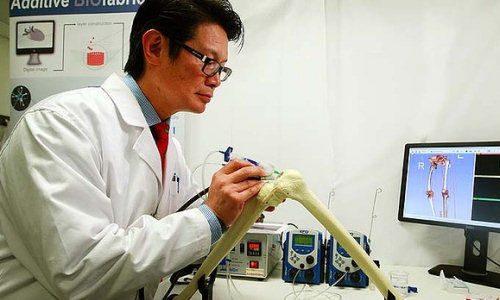A hand-held ”bio pen” developed in Wollongong will allow surgeons to draw regenerating bone material directly on to the body.
The development enables customised implants to be created at the time of surgery, eliminating the need to harvest cartilage and grow it for weeks in a lab as a replacement for damaged or diseased material.
On Wednesday researchers from the Australian Research Council Centre of Excellence for Electromaterials Science, at the University of Wollongong unveiled a prototype of the BioPen.
Professor Peter Choong is leading efforts at St Vincent’s Hospital in Melbourne to optimise the cell material for clinical trials, which is ejected from the pen in a method similar to 3D printing.
Professor Choong said the cell material, and the scaffolding set down in the 3D printing method, would provide a more predictable result than existing orthopaedic implants, which ”don’t always form the sort of cartilage we want”.
Story Source:
The above story is based on materials provided by The Sydney Morning Herald, Angela Thompson.





